Click on images to enlarge

dense infestation (Photo: Sheldon Navie)

habit (Photo: Sheldon Navie)
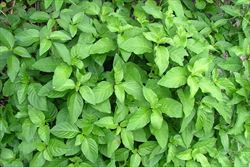
habit prior to flowering (Photo: Sheldon Navie)
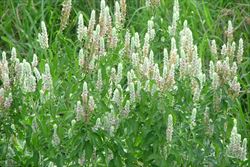
habit in flower (Photo: Sheldon Navie)
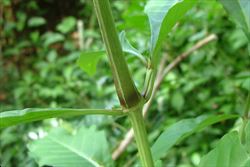
close-up of four-angled stem and bases of paired leaves (Photo: Sheldon Navie)
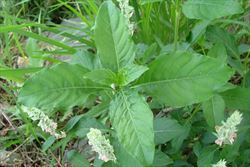
leaves (Photo: Sheldon Navie)

elongated flower clusters (Photo: Sheldon Navie)

flowers and whitish-coloured floral bracts (Photo: Sheldon Navie)
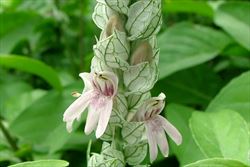
close-up of flowers (Photo: Sheldon Navie)

immature fruit (Photo: Sheldon Navie)
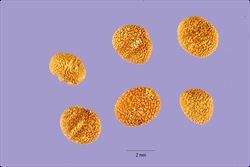
close-up of seeds (Photo: Tracey Slotta at USDA PLANTS Database)

young plant (Photo: Sheldon Navie)
Scientific Name
Justicia betonica L.
Family
Acanthaceae
Common Names
paper plume, shrimp plant, squirrel tail, squirrel's tail, squirreltail, white shrimp, white shrimp plant
Origin
Native to eastern and southern Africa (i.e. Kenya, Mozambique, Lesotho, Namibia, South Africa and Swaziland) and the Indian sub-continent (i.e. India and Sri Lanka).
Naturalised Distribution
This species is becoming widely naturalised in the warmer coastal districts of eastern Australia (i.e. in the coastal districts of eastern Queensland and northern New South Wales).
Also naturalised overseas on several Pacific islands (e.g. in French Polynesia, Niue, New Caledonia and Hawaii).
Notes
White shrimp plant (Justicia betonica) is regarded as an environmental weed in Queensland and as a potential environmental weed or "sleeper weed" in other parts of northern Australia. This garden ornamental has escaped cultivation and invaded roadsides, parks, urban bushland, disturbed sites and waste areas. It prefers damper sites and is particularly invasive along waterways and in riparian areas.
White shrimp plant (Justicia betonica) is quickly becoming widespread and common in waterways in south-eastern Queensland. It forms dense infestations that replace native species and was recently ranked among the top 200 most invasive species in this region. This species was first recorded as naturalised in New South Wales in the year 2000, in Ukerebagh Nature Reserve at Tweed Heads in the far north-east corner of the state.
This species is is also regarded as being invasive in Hawaii, where it often escapes cultivation and forms large stands of vegetation.

